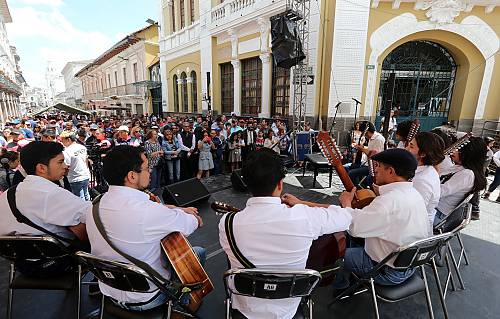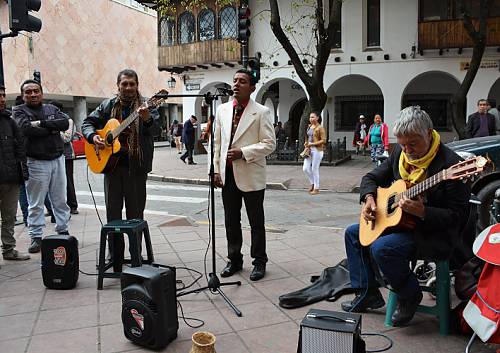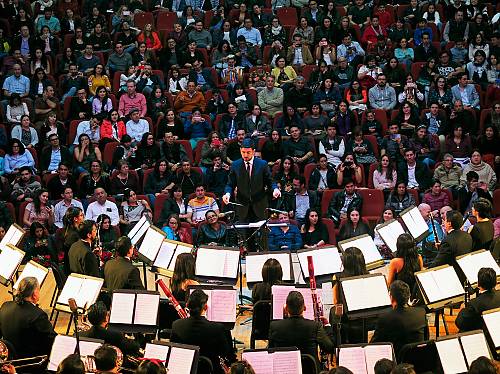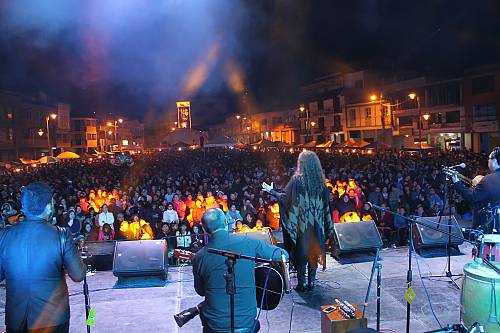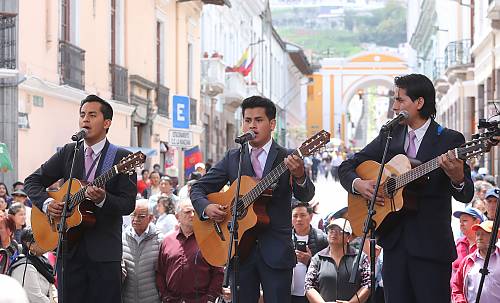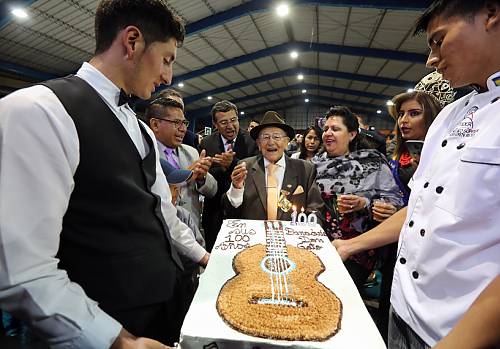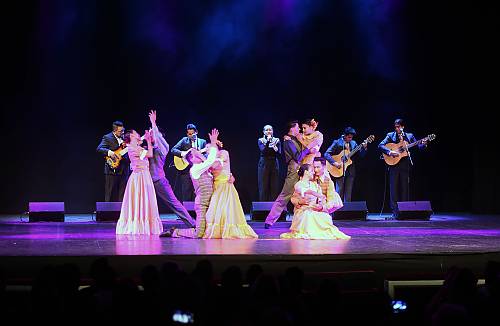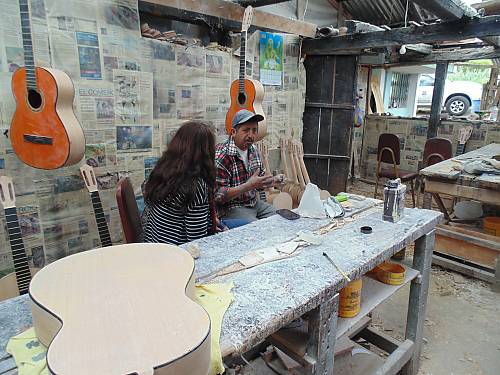Pasillo, song and poetry
Inscribed in 2021 (16.COM) on the Representative List of the Intangible Cultural Heritage of Humanity

The pasillo is a type of music and dance that emerged in Ecuador in the nineteenth century, during the South American independence wars. It is a fusion of elements of indigenous music, such as the yaraví, with a complex variety of musical genres including the waltz, the minuet and the Spanish bolero. The pasillo, which means ‘small step’, is danced in short steps by a couple. A product of urban culture, it is performed in ballroom dances, public ceremonies, festivals, radio and television programmes, and outdoor concerts. It is a dynamic, ever-evolving practice that can be performed by soloists, duos, trios and ensembles. Usually accompanied by guitars and the requinto, a high-pitched guitar, it is essentially a musicalized poem, with lyrics relating to love, heartbreak, life, death, family, homeland and the daily life of the people. To Ecuadorians, the pasillo is an identity marker and a symbol of their connection with the homeland, and with time, has become a form of collective expression. The music is performed by men and women and transmitted from generation to generation within families, in formal training centres, and through street musicians and popular or municipal bands.
